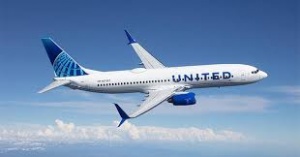Vietnam Airlines: Soaring to New Heights - A Story of Remarkable Growth

Vietnam Airlines: Soaring to New Heights - A Story of Remarkable Growth
Vietnam Airlines, the national flag carrier of Vietnam, has emerged as one of the leading airlines in Southeast Asia, with a rich history of growth and expansion. From its humble beginnings in 1956 as a small domestic airline, it has evolved into a major international player, connecting Vietnam to the world and contributing significantly to the country’s economic growth. This article explores the incredible journey of Vietnam Airlines and how it has managed to achieve such remarkable growth over the years.
Foundations and Early Years:
Vietnam Airlines was established on January 20, 1956, under the name Vietnam Civil Aviation. Initially, it operated domestic flights using small aircraft like the Douglas DC-3. As the country went through periods of turbulence, including the Vietnam War and post-war reconstruction, the airline faced numerous challenges, but it managed to continue its operations, albeit on a smaller scale.
Key Milestones and Expansion:
ADVERTISEMENT
The turning point for Vietnam Airlines came in the late 1980s when the country embarked on economic reforms known as “Doi Moi.” As Vietnam’s economy opened up to the world, the airline seized the opportunity to modernize and expand its fleet and services. In 1990, Vietnam Airlines began its first international flight to Bangkok, Thailand, marking the beginning of its global presence.
Throughout the 1990s and early 2000s, Vietnam Airlines underwent significant developments. It introduced new routes, upgraded its fleet with modern aircraft, and focused on improving its service quality and safety standards. In 1995, the airline received its first Boeing 777, symbolizing a new era of long-haul flights to Europe and the United States.

Alliance Memberships and Codeshare Partnerships:
To further strengthen its international presence, Vietnam Airlines became a member of the SkyTeam Alliance in 2010. This alliance allowed the airline to collaborate with other leading carriers, expanding its reach to over 1,150 destinations worldwide and providing seamless travel experiences for its passengers.
Additionally, Vietnam Airlines established several strategic codeshare partnerships with other prominent airlines, enabling it to offer a wider network of routes and increasing its accessibility to key markets.
Fleet Modernization and Technological Advancements:
Recognizing the importance of a modern and efficient fleet, Vietnam Airlines embarked on an ambitious fleet renewal program. It placed substantial orders for state-of-the-art aircraft, such as the Boeing 787 Dreamliner and the Airbus A350 XWB, which not only improved passenger comfort but also reduced fuel consumption and carbon emissions.
Furthermore, the airline invested in cutting-edge technologies to enhance its operations, customer service, and overall efficiency. These advancements included digital booking platforms, inflight entertainment systems, and mobile applications that simplified the travel experience for passengers.

Focus on Quality and Service Excellence:
Vietnam Airlines has been dedicated to providing top-notch service to its customers. It has garnered several awards and recognitions over the years for its commitment to excellence, including “Best Southeast Asian Airline” and “World’s Leading Cultural Airline” at the World Travel Awards.
The airline is the event sponsor of the World Travel Awards Asia & Oceania 2023 ceremony which will be held on 6 September in Ho Chi Minh City, Vietnam.
With an emphasis on passenger comfort, the airline offers a variety of cabin classes, ranging from economy to luxurious business and first-class. Additionally, its onboard culinary offerings showcase Vietnamese cuisine, immersing passengers in the country’s rich culture.

Sustainable Initiatives:
As environmental concerns have gained prominence, Vietnam Airlines has taken steps to reduce its ecological footprint. It has introduced sustainable practices, such as fuel-efficient flight operations, waste reduction, and carbon offset programs, aiming to minimize its impact on the environment.
Conclusion:
Vietnam Airlines’ journey from a domestic carrier to a global aviation player is a testament to the airline’s resilience, strategic vision, and commitment to excellence. By continuously modernizing its fleet, expanding its network, and focusing on quality service, Vietnam Airlines has carved its place among the top airlines in Southeast Asia. As the world continues to recover from the global pandemic, the airline is well-positioned to play a vital role in shaping Vietnam’s future growth and connecting the country to the rest of the world.


